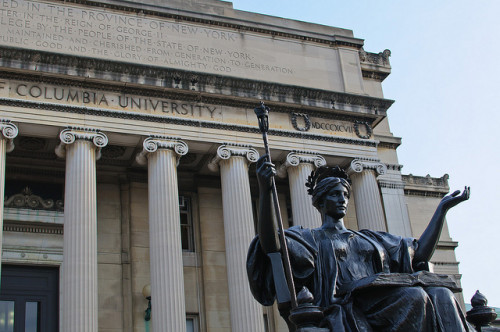
In forums, prospective transfer students often ask, “What can I do to improve my chances?” I’m going to take you through one such post and provide the same type of advice I would give to a student if I were providing a one-on-one consultation. The post comes from ElmerChelmo:
I am currently a first-year student (technically a sophomore) at a four-year public university. I’m looking at Rice University, UNC, University of Southern California, and Notre Dame, which I realize are crazy hard to get into. I am motivated and desperate though because simply put, I hate the school I attend. I get full tuition paid for, but I can’t get over the fact that I just hate everything about it. It’s just not for me.
“Hate” was mentioned twice. Be careful to avoid coloring your transfer application with your strong, negative emotions toward your current school.
It was my safety school my senior year, and I got rejected by a lot of top schools, which I should have realize were way out of my reach. I didn’t think going to my safety school would be bad, but experiencing it as a student there could not have gone worse.
An important–often unspoken–part of the transfer application process is expectations management. You will inevitably be let down if you label your reach schools as your match schools. If the “top schools” you had aimed for as a freshman applicant were “way out of [your] reach”, perhaps your safety school was actually your match school.
Choose a wide range of schools, and take the time to label them as accurately as possible (safety, match/just right, or dream) based on information gathered from school websites, collegeboard.org, and direct communications with the schools.
High School:
Couple ECs including Student Council secretary, Tutor, NHS, SADD, Cross Country, Book Club, and Track
Ranked 2/118
Don’t remember GPA
ACT 32
SAT Writing 800, SAT Reading 680, SAT Math 750
SAT Subject Math II 790, SAT Subject US History 790
AP US History (5), Calculus BC (5), US Government (5), English Language (5), Statistics (5), Microeconomics (4), English Literature (4), Environmental Science (4)
Worked at a restaurant as a busboy
Interned with a lawyer
The Common App allows transfer applicants to list up to 10 activities, including those completed in grades 11 and/or 12. Given the limited space, carefully choose which activities to include in your application. If you were very substantially involved in an activity prior to grade 11, consider including brief information about it in “Additional Information” in Common App. However, avoid dumping a list of superficial activities into “Additional Information”.
Of your high school activities listed, busboy sounds the most interesting, as many (or most) high school students do not work during the academic year. If you had to work to help cover living expenses, mention that in the description of this activity.
College:
Math & Stats / Information Systems double major
Calculus III (A), Probability (A), Physics (A), Physics Lab (A+), Business 101 (A-)
3.93 GPA (I’m really going to try harder next semester to get a 4.0)
I came in with 35 credit hours, last semester I took 14, next semester I’m taking 17
Information Systems and Analytics Club treasurer, Green Team member, Optimist Club (volunteer) member, Actuarial Science Club member
I’m going to try to do Habitat for Humanity to get more service hours
Cohesion in your application makes for a good strategy. For example, if you want to portray yourself as an expert in Math/Stats/Information Systems, align your activities as such. If your only reason for doing Habitat for Humanity is to gain community service hours, I would reconsider. Perhaps you can use your talents and skills in math to serve society, e.g., provide math tutoring. Do something you’re genuinely interested in.
I want to transfer so bad, and I can’t transfer to a school that is mediocre or only above average academically because I’m going to have to pay so much more to attend whatever school I go to so I want to make transferring worth it by going to a top school.
Take some time to think about why you want to transfer, as you will need to articulate your reasons very clearly in your application. You’ve provided a lot of information, but I still don’t actually know why you want to transfer. What would you gain from transferring? What are your goals? How would transferring align with your bigger goals? What do you have to offer to the school you transfer to?
By the way this is my first time applying to these schools. What kinds of things can I do to really improve my chances of transferring to these very exclusive schools? I’m talking about specific suggestions. Thank you in advance! [smiley face]
Additional information from ElmerChelmo:
Also I’m going to try to get another leadership position in either the Actuarial Science Club or the Optimist Club. Thanks again! [smiley face]
How does the Optimist Club fit into everything else you’re doing and your goals? Stay focused. While you have a great profile, I don’t know what your center of gravity or core is.
Reply from Camo:
You sound like you have a really good shot. Most top colleges consider 3.7-3.8 competitive so your GPA is pretty impressive (especially with the classwork).
Just did a quick check, Rice admits 17% of transfers, USC admits 29%, UNC admits 39%, and Notre Dame admits 25%. I think you’re probably at the top of the pool. Just perfect your apps and you’ll probably get in to a couple of them.
As we say whenever we post statistics on transfer admissions, take these numbers with a grain of salt. Knowing about a relatively high transfer admission rate might not be helpful for your context.
For example, the transfer admission rate for UNC Chapel Hill looks high at least in part because the university has a transfer program: “…[The] University of North Carolina at Chapel Hill launched the Carolina Student Transfer Excellence Program, or C-STEP, to enable more community-college students to transfer to and graduate from Carolina.”
Reply from 1sttimetransfer:
With your gpa and courseload you could probably get into top 20 schools for sure. So I think that is within your range.
Such a comment may provide a morale booster, but again, expectations management is important for reducing the stress involved in the transfer application process. Yes, you do have a great profile, as I mentioned earlier, but no one can tell you whether you will “for sure” get into “top 20 schools”.
My final suggestions: Be vigilant about potentially erroneous advice. Get more than one opinion, and analyze those opinions. Step back, look at your application as a whole in light of the data and evidence (both qualitative and quantitative) you’ve collected. Devise a strategy for tackling the transfer admissions process from there.
(Photo: Edwin Torres)









